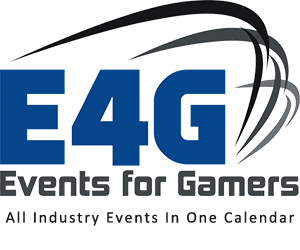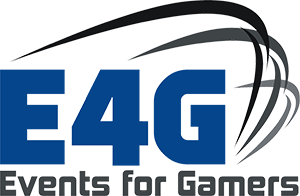The inaugural GDC Next 2013 (and App Developers Conference) faced a unique challenge when it was announced the conference would be moved from Austin to Los Angeles and remain a Q4 event. Over the ten years GDC and its previous incarnations were held in Austin, a core group of attendees flocked to the event faithfully and enjoyed the warm autumn weather, unique game development and artistic community in Austin, as well as the nightlife on and around the famed 6th Street stretch of bars and music venues. A couple of the reasons behind the move appeared to be that the conference needed to change focus from MMOGs to mobile and also address the accessibility via travel for Californian and Asian businesspeople in the games industry.
 How does a conference so deeply imprinted by the legacy in Austin — moving to the Los Angeles Convention Center, which is known by tens of thousands of game industry participants as the home of the E3 game trade show — find an identity and make a unique footprint of its own? Did this conference succeed in doing so?
How does a conference so deeply imprinted by the legacy in Austin — moving to the Los Angeles Convention Center, which is known by tens of thousands of game industry participants as the home of the E3 game trade show — find an identity and make a unique footprint of its own? Did this conference succeed in doing so?
To a point, yes.
GDC Next/ADC moved the ball forward with the number of attendees from the last year of the conference in Austin. According to the official post-event press release, the event brought in “close to 4,000 industry professionals at the Los Angeles Convention Center (LACC), more than 40 percent up in attendees from the show’s spiritual predecessor GDC Online in 2012.” Some of these passes were represented by free expo pass-holders, which meant a percentage of the folks using gratis passes for touring the expo floor were a mix of students, independent developers, vendors and even curious folks outside the industry.
The Expo Floor
 Speaking of the expo floor, amidst familiar monetization and platform vendors, there were a few of the next generation-oriented companies GDC Next was designed to advocate.
Speaking of the expo floor, amidst familiar monetization and platform vendors, there were a few of the next generation-oriented companies GDC Next was designed to advocate.
Among them was Sungame Corporation’s Flightdeck Commander 3D tablet. Inside the 10.1” simple glossy black case is a dual core A9 1.5 Ghz processor, 16 GB of RAM (32 GB version coming soon), with video playback of up to 6 hours and standby time of up to 300 hours, according to their official company info. The main attraction of the device is the no-glasses 3D display, which projects media through its lenticular lens in the display to show the content as 3D. The mixed media demo created a pretty convincing illusion of depth with a fairly wide angle of viewing in which to see it, and only minimal color shimmering in the 3D projection itself.
 Another cool vision for the future of gaming was represented by a Neurosky headset-driven demo of the accurately named “Throw Trucks With Your Mind” game. Using the headset as a means of interface in conjunction with the classic mouse and keyboard combination to look and move through the environment, it’s possible to relax and focus the mind to manipulate objects in the game. How? To push and pull, lift and drop objects, from trucks (of course), to barrels and crates and more in a LAN-style team-play environment.
Another cool vision for the future of gaming was represented by a Neurosky headset-driven demo of the accurately named “Throw Trucks With Your Mind” game. Using the headset as a means of interface in conjunction with the classic mouse and keyboard combination to look and move through the environment, it’s possible to relax and focus the mind to manipulate objects in the game. How? To push and pull, lift and drop objects, from trucks (of course), to barrels and crates and more in a LAN-style team-play environment.
One of the booths with a small crowd often surrounding it was Technical Illusions with their CastAR headset demo, which combines augmented reality and virtual reality in one relatively lightweight pair of glasses. The glasses send images from a device to the two micro-projectors on the glasses at 720p resolution and 240 Hz, which is enough to create a convincing illusion of depth without completely disorienting the player, allowing the player to stay connected to the environment around them. As someone who’s tried the Oculus Rift VR headset, I’ve almost lost my balance standing up while test driving the immersive device, compared to the CastAR headset, which should solve that problem, the potential breadth and depth of utility possible through the CastAR device in both AR and VR is intriguing.
The Tracks Floor
Above the expo hall on the first floor, the second floor of the LACC was dominated by the various tracks of the the ADC and GDC Next, the content split to a wing of the floor for each respective conference.
 On the GDC Next side, which is the focus of this article, the most differentiated tracks from traditional GDC speaking tracks were the “Future of Gaming” tracks and “Next Generation Platforms” tracks, covering a spread of content from augmented reality to transmedia partnerships and multiple platform game development. While I didn’t have the chance to attend enough of the sessions to attest to this more comprehensively, the tilt in the overall body of topics is subtle but noticeable towards future-focused themes from other GDC content I’ve seen before. Some of the topics drawing the largest crowds and excitement in the room seemed to be the next-gen console talks, sponsored expo theatre talks which allowed expo pass-holders to attend — and an e-sports panel I attended, which attracted a busy room and a lengthy Q&A session after the panel back-and-forth concluded.
On the GDC Next side, which is the focus of this article, the most differentiated tracks from traditional GDC speaking tracks were the “Future of Gaming” tracks and “Next Generation Platforms” tracks, covering a spread of content from augmented reality to transmedia partnerships and multiple platform game development. While I didn’t have the chance to attend enough of the sessions to attest to this more comprehensively, the tilt in the overall body of topics is subtle but noticeable towards future-focused themes from other GDC content I’ve seen before. Some of the topics drawing the largest crowds and excitement in the room seemed to be the next-gen console talks, sponsored expo theatre talks which allowed expo pass-holders to attend — and an e-sports panel I attended, which attracted a busy room and a lengthy Q&A session after the panel back-and-forth concluded.
A Postmortem
 GDC Next (and ADC) is a blend of conferences still in transition, between the past and the future. The past is Austin, the present in E3’s backyard at the LACC, but with an eye towards focusing on the future of gaming. To rise above the sentimental missives about what the conference used to be in Austin, GDC Next will likely need to focus even more on the future of gaming to differentiate it from the many gaming conference in California and give it an identity all its own apart from location. Augmented reality, virtual reality, haptics, 3D gaming, future-thinking and alternative game play concepts that have been teased at this show just might help point the point way.
GDC Next (and ADC) is a blend of conferences still in transition, between the past and the future. The past is Austin, the present in E3’s backyard at the LACC, but with an eye towards focusing on the future of gaming. To rise above the sentimental missives about what the conference used to be in Austin, GDC Next will likely need to focus even more on the future of gaming to differentiate it from the many gaming conference in California and give it an identity all its own apart from location. Augmented reality, virtual reality, haptics, 3D gaming, future-thinking and alternative game play concepts that have been teased at this show just might help point the point way.
– Paul Philleo, Contributing Editor



